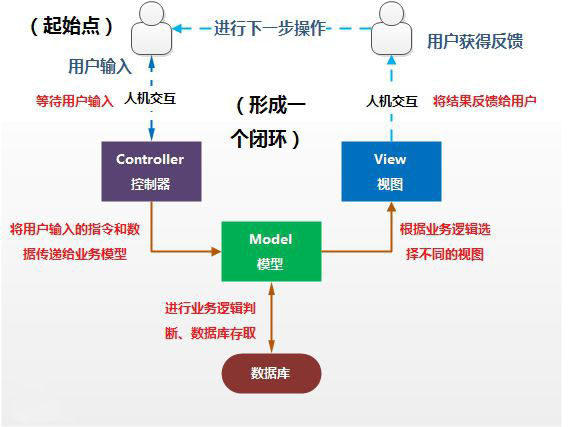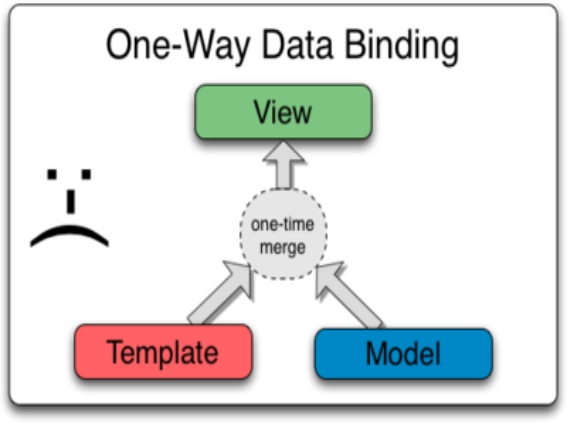步入正题。学习Angular,首先得了解、熟知、掌握它的四大核心特性。
一、MVC模式

Model(模型):是应用程序中用于处理应用程序数据逻辑的部分,通常模型对象负责在数据库中存取数据。
View(视图): 用户看到并与之交互的界面 ,相当于html元素组成的页面。
Controller(控制器):是应用程序中处理用户交互的部分。通常控制器负责从视图读取数据,控制用户输入,并向模型发送数据。
MVC好处:职责清晰,代码模块化,它能为应用程序处理很多不同的视图,可以复用。后期维护方便。
AngularJS的MVC是借助$scope(作用域)实现的。
二、模块化与依赖注入
Angular 应用,可以说一切都是从模块开始的,下分五大模块,如图:

分别对应的是路由、过滤、指令、服务、控制器。
引入方法:
<!doctype html> <html ng-app="myapp"> <head> <meta charset="utf-8"> </head> <body> <script> //[]内可以依赖angular内置模块,或者自定义模块注入,在路由、指令、服务中使用。具体的还得靠自己实践后明白。 var Myapp = angular.module('myapp',['ngRoute']); //控制器 Myapp.controller('name', function(){ }); //指令 Myapp.directive('name', ['', function(){ // Runs during compile return { // name: '', // priority: 1, // terminal: true, // scope: {}, // {} = isolate, true = child, false/undefined = no change // controller: function($scope, $element, $attrs, $transclude) {}, // require: 'ngModel', // Array = multiple requires, ? = optional, ^ = check parent elements // restrict: 'A', // E = Element, A = Attribute, C = Class, M = Comment // template: '', // templateUrl: '', // replace: true, // transclude: true, // compile: function(tElement, tAttrs, function transclude(function(scope, cloneLinkingFn){ return function linking(scope, elm, attrs){}})), link: function($scope, iElm, iAttrs, controller) { } }; }]); </script> </body> </html>
三、指令
指令是Angular 中最有意味的一种特性,也是难点。先初步熟悉下,下几篇文章具体详解。
<!doctype html> <html ng-app="MyModule"> <head> <meta charset="utf-8"> </head> <body> <hello></hello> <div hello></div> <div class="hello"></div> <!-- directive:hello --> <div></div> <script> var MyApp = angular.module('MyModule',[]); MyApp.directive("hello", function() { return { restrict: 'AEMC', template: '<div>Hi everyone!</div>', replace: true } }); </script> </body> </html>
四、双向数据绑定
先看一下单向数据绑定。

它的处理流程是这样的,首先呢,写好模板加上从服务器调取的数据结合在一起,通过数据绑定机制生成一段html标签,然后把这段标签显示出来。
它的缺点:html标签一旦生成,就无法改变,要是改变其中元素,或者新的数据更新,又要重新再来一遍把它替换掉,浪费时间,占用运行内存。
再看双向数据绑定。

它的想法是这样的,视图和数据是对应的,当视图上面的内容发生变化时,数据模型也跟着变化;当数据模型发生变化时,视图也跟着变化。
双向数据绑定经常应用的场景,表单的应用。。。。。。。。



